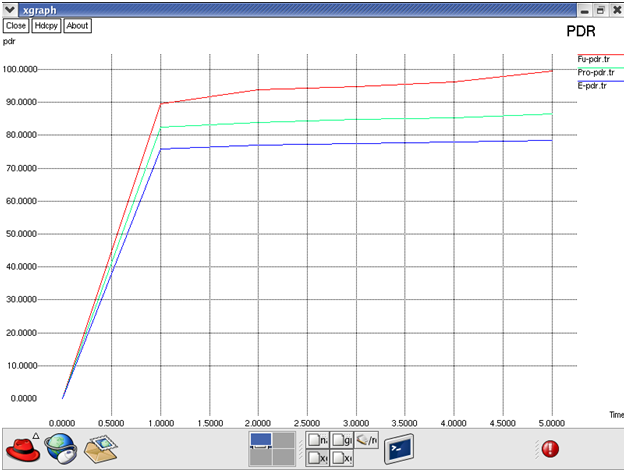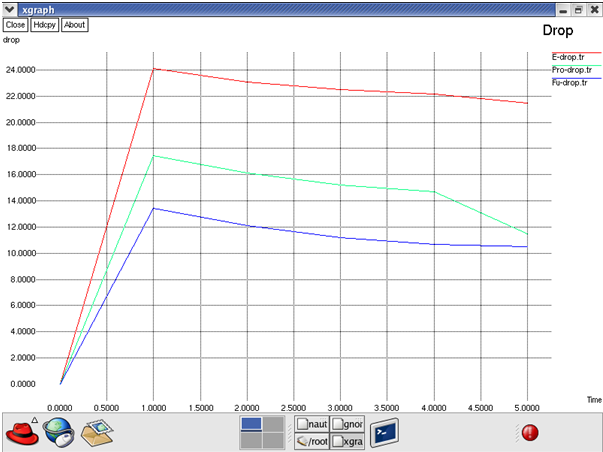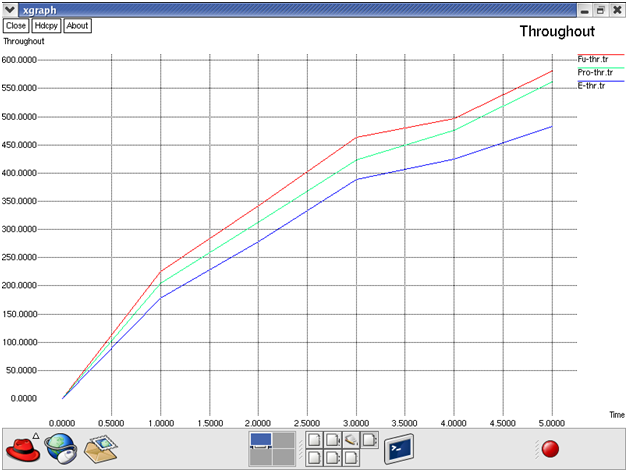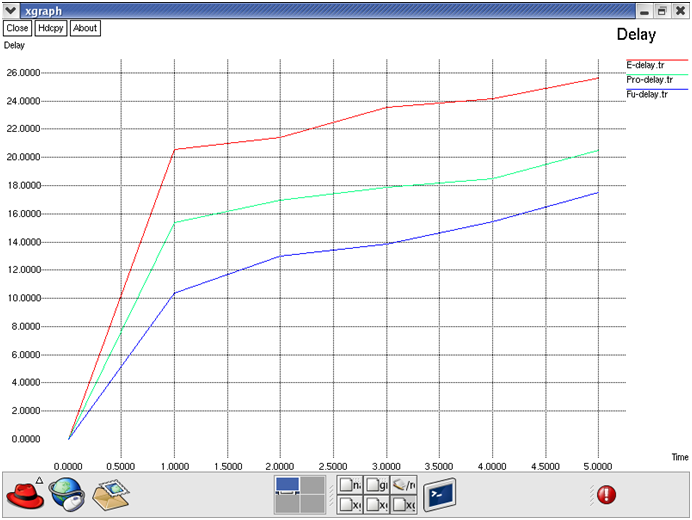| Sl.No |
Project Title |
Year |
| 1 |
Joint Access Control and Resource Allocation for Concurrent and Massive Access of M2M Devices |
2015 |
| 2 |
Downlink Power Control in Self-Organizing Dense Small Cells Underlaying Macrocells: A Mean Field Game |
2015 |
| 3 |
Hybrid Opportunistic Relaying and Jamming With Power Allocation for Secure Cooperative Networks |
2015 |
| 4 |
Assessing Performance Gains Through Global Resource Control of Heterogeneous Wireless Networks |
2015 |
| 5 |
Greening Geographical Load Balancing |
2015 |
| 6 |
A Hierarchical Account-Aided Reputation Management System for MANETs |
2015 |
| 7 |
Utility Fair Optimization of Antenna Tilt Angles in LTE Net works |
2015 |
| 8 |
Efficient Allocation Of Periodic Feedback Channels In Broadband Wireless Networks |
2015 |
| 9 |
Proportional Fair Coding For wireless mesh Networks |
2015 |
| 10 |
Exploiting Asynchronous Amplify-And-Forward Relays To Enhance The Performance Of Ieee 802.11 Networks |
2015 |
| 11 |
Cellular Architecture And Key Technologies For 5g Wireless Communication Networks |
2015 |
| 12 |
Energy-Efficient Sensor Scheduling Algorithm in Cognitive Radio Networks Employing Heterogeneous Sensors |
2015 |
| 13 |
Opportunistic Spectrum Access with Two Channel Sensing in Cognitive Radio Networks 14 Optimal Scheduling for Multi-Radio Multi-Channel Multi-Hop Cognitive Cellular Networks |
2015 |
| 14 |
DSCA: Dynamic Spectrum Co-Access Between the Primary Users and the Secondary Users |
2015 |
| 15 |
On Joint Power and Admission Control in Underlay Cellular Cognitive Radio Networks |
2015 |
| 16 |
Cooperative Relay Selection in Cognitive Radio Networks |
2015 |
| 17 |
Statistical Modeling of Spectrum Sensing Energy in Multi-Hop Cognitive Radio Networks |
2015 |
| 18 |
Adaptive Random Access for Cooperative Spectrum Sensing in Cognitive Radio Networks |
2015 |
| 19 |
Robust Power Control Under Location and Channel Uncertainty in Cognitive Radio Networks |
2015 |
| 20 |
Energy Efficient Collaborative Spectrum Sensing Based on Trust Management in Cognitive Radio Networks |
2015 |
| 21 |
Improving the Network Lifetime of MANETs through Cooperative MAC Protocol Design |
2015 |
| 22 |
A Hierarchical Account-Aided Reputation Management System for MANETs |
2015 |
| 23 |
Defending Against Collaborative Attacks by Malicious Nodes in MANETs: A Cooperative Bait Detection Approach |
2015 |
| 24 |
Joint Optimal Data Rate and Power Allocation in Lossy Mobile Ad Hoc Networks with Delay-Constrained Traffics |
2015 |
| 25 |
Mobile-Projected Trajectory Algorithm With Velocity-Change Detection for Predicting Residual Link Lifetime in MANET |
2015 |
| 26 |
BRACER: A Distributed Broadcast Protocol in Multi-Hop Cognitive Radio Ad Hoc Networks with Collision Avoidance |
2015 |
| 27 |
Interference-Based Topology Control Algorithm for Delay-Constrained Mobile Ad Hoc Networks |
2015 |
| 28 |
Cooperative Load Balancing and Dynamic Channel Allocation for Cluster-Based Mobile Ad Hoc Networks |
2015 |
| 29 |
CoCoWa: A Collaborative Contact-Based Watchdog for Detecting Selfish Nodes |
2015 |
| 30 |
Estimating the Available Medium Access Bandwidth of IEEE 802.11 Ad Hoc Networks with Concurrent Transmissions |
2015 |
| 31 |
Dynamic Channel Assignment for Wireless Sensor Networks: A Regret Matching Based Approach |
2015 |
| 32 |
Segment-Based Anomaly Detection with Approximated Sample Covariance Matrix in Wireless Sensor Networks |
2015 |
| 33 |
Maximum Lifetime Scheduling for Target Coverage and Data Collection in Wireless Sensor Networks |
2015 |
| 34 |
Mobile Data Gathering with Load Balanced Clustering and Dual Data Uploading in Wireless Sensor Networks |
2015 |
| 35 |
Joint Cooperative Routing and Power Allocation for Collision Minimization in Wireless Sensor Networks With Multiple Flows |
2015 |
| 36 |
PWDGR: Pair-Wise Directional Geographical Routing Based on Wireless Sensor Network |
2015 |
| 37 |
A Spectral Clustering Approach to Identifying Cuts in Wireless Sensor Networks |
2015 |
| 38 |
Non cooperative Game-Based Energy Welfare Topology Control for Wireless Sensor Networks |
2015 |
| 39 |
Opportunistic Routing Algorithm for Relay Node Selection in Wireless Sensor Networks |
2015 |
| 40 |
An Efficient Cluster-Tree Based Data Collection Scheme for Large Mobile Wireless Sensor Networks |
2015 |
| 41 |
Energy Efficient Clustering Scheme for Prolonging the Lifetime of Wireless Sensor Network With Isolated Nodes |
2015 |
| 42 |
Lightweight Self-Adapting Linear Prediction Algorithms for Wireless Sensor Networks |
2015 |
| 43 |
Energy Management and Cross Layer Optimization for Wireless Sensor Network Powered by Heterogeneous Energy Sources |
2015 |
| 44 |
A Secure Scheme Against Power Exhausting Attacks in Hierarchical Wireless Sensor Networks |
2015 |
| 45 |
ACPN: A Novel Authentication Framework with Conditional Privacy-Preservation and Non-Repudiation for VANETs |
2015 |
| 46 |
Energy-Efficient Scheduling in Green Vehicular Infrastructure With Multiple Roadside Units |
2015 |
| 47 |
Delay-Constrained Data Aggregation in VANETs |
2015 |
| 48 |
An Evolutionary Game Theory-Based Approach to Cooperation in VANETs Under Different Network Conditions |
2015 |
| 49 |
Speed Adaptive Probabilistic Flooding for Vehicular Ad Hoc Networks |
2015 |
| 50 |
A Novel Centralized TDMA-Based Scheduling Protocol for Vehicular Networks |
2015 |
| 51 |
A Historical-Beacon-Aided Localization Algorithm for Mobile Sensor Networks |
2015 |
| 52 |
Minimizing Transmission Cost for Third-Party Information Exchange with Network Coding |
2015 |
| 53 |
Optimal Configuration of Network Coding in Ad Hoc Networks |
2015 |
| 54 |
Packet Delivery Ratio/Cost in MANETs with Erasure Coding and Packet Replication |
2015 |
| 55 |
Privacy-Preserving and Truthful Detection of Packet Dropping Attacks in Wireless Ad Hoc Networks |
2015 |
| 56 |
Defending Against Collaborative Attacks by Malicious Nodes in MANETs: A Cooperative Bait Detection Approach |
2015 |
| 57 |
Privacy and Quality Preserving Multimedia Data Aggregation for Participatory Sensing Systems |
2015 |
| 58 |
User Privacy and Data Trustworthiness in Mobile Crowd Sensing |
2015 |
| 59 |
A Virtual Coordinate-Based Bypassing Void Routing for WSN |
2015 |
| 60 |
Adaptive Routing for Dynamic On-Body WSN |
2015 |
| 61 |
An Energy Efficient Cross-Layer Network Operation Model for IEEE 802.15.4-Based Mobile WSN |
2015 |
| 62 |
Cost-Aware SEcure Routing (CASER) Protocol Design for WSN |
2015 |
| 63 |
Efficient Coverage and Connectivity Preservation With Load Balance for WSN |
2015 |
| 64 |
Geographic Routing in Clustered WSN Among Obstacles |
2015 |
| 65 |
Impact of Limiting Hop Count on the Lifetime of WSN |
2015 |
| 66 |
Joint Virtual MIMO and Data Gathering for WSN |
2015 |
| 67 |
Time-Sensitive Utility-Based Single-Copy Routing in Low Duty Cycle WSN |
2015 |
| 68 |
BUS-VANET: A BUS Vehicular Network Integrated with Traffic Infrastructure |
2015 |
| 69 |
Real-Time Path Planning Based on Hybrid-VANET-Enhanced Transportation System |
2015 |
| 70 |
VANET Modeling and Clustering Design Under Practical Traffic, Channel and Mobility Conditions |
2015 |
| 71 |
Defeating Jamming With the Power of Silence: A Game-Theoretic Analysis |
2015 |
| 72 |
VGDRA: A Virtual Grid-Based Dynamic Routes Adjustment Scheme for Mobile Sink-Based WSN |
2015 |
| 73 |
A Lightweight Secure Scheme for Detecting Provenance Forgery and Packet Drop Attacks in Wireless Sensor Networks |
2015 |
| 74 |
An Efficient Distributed Trust Model for Wireless Sensor Networks |
2015 |
| 75 |
An Encryption Scheme Using Chaotic Map and Genetic Operations for Wireless Sensor Networks |
2015 |
| 76 |
Effective Key Management in Dynamic Wireless Sensor Networks |
2015 |
| 77 |
Secure and Distributed Data Discovery and Dissemination in Wireless Sensor Networks |
2015 |
| 78 |
Toward Energy-Efficient Trust System Through Watchdog Optimization for WSNs |
2015 |
| 79 |
Passive IP Traceback: Disclosing the Locations of IP Spoofers from Path Backscatter |
2015 |
| 80 |
Time-Delayed Broadcasting for Defeating Inside Jammers |
2015 |
| 81 |
Secure Data Aggregation Technique for Wireless Sensor Networks in the Presence of Collusion Attacks |
2015 |




